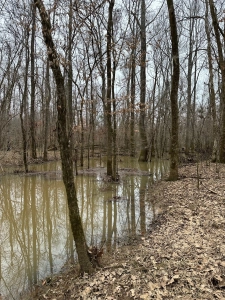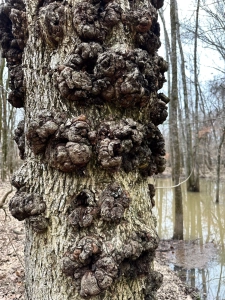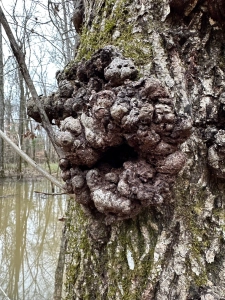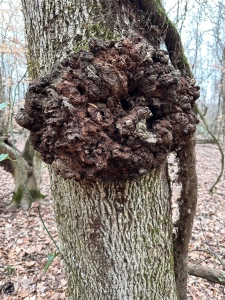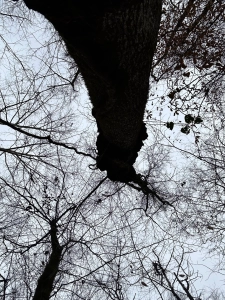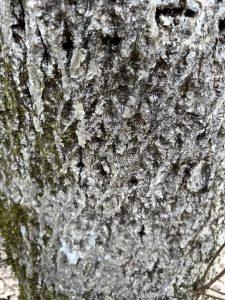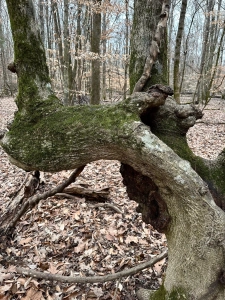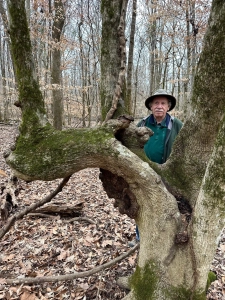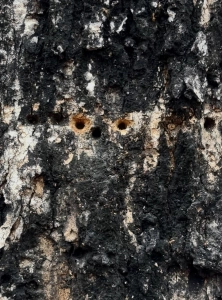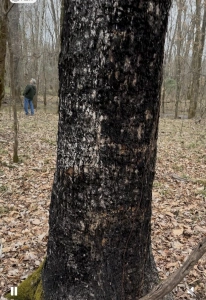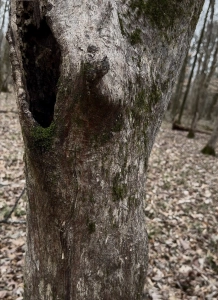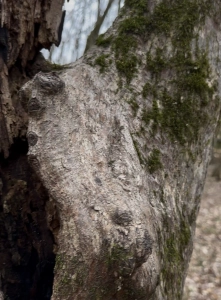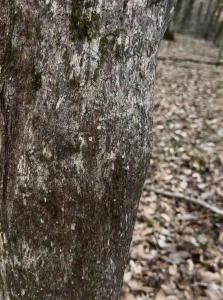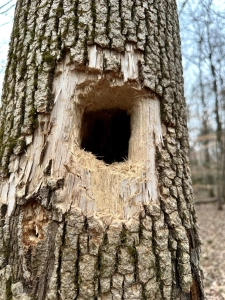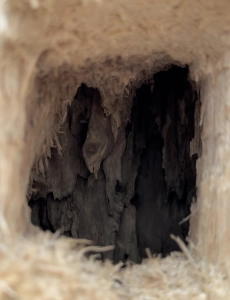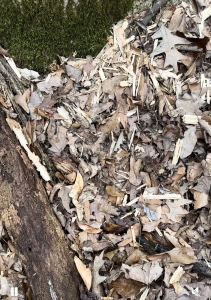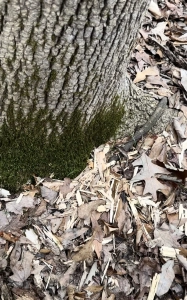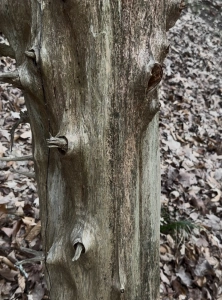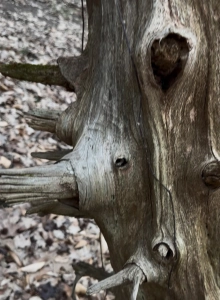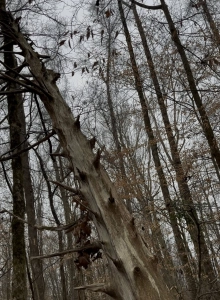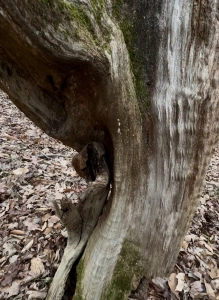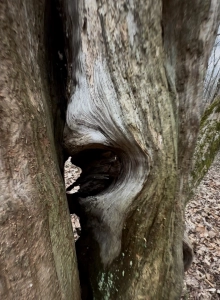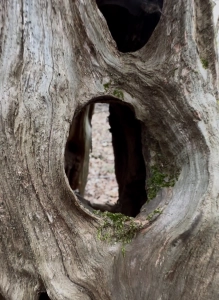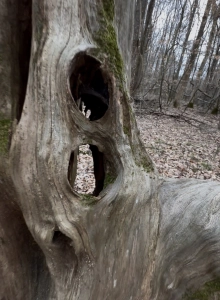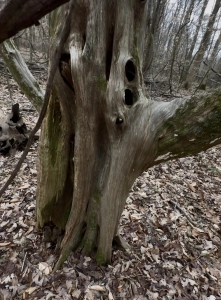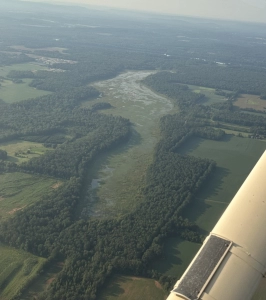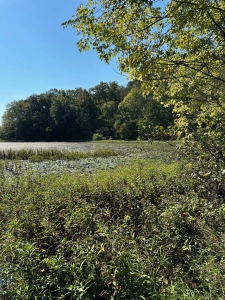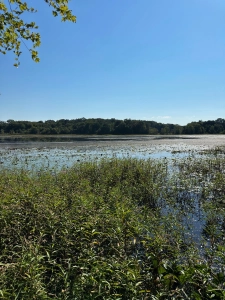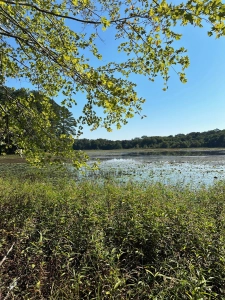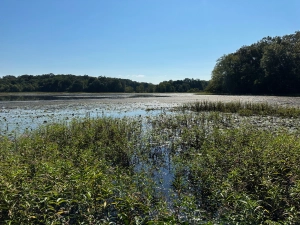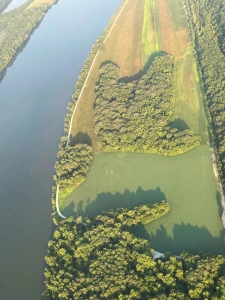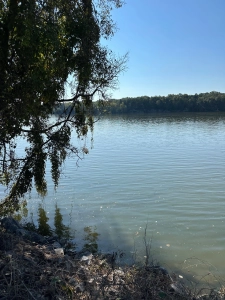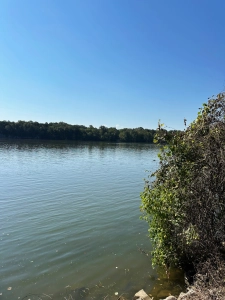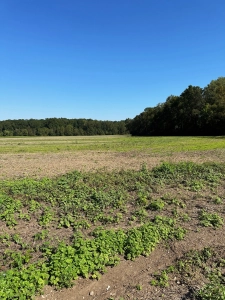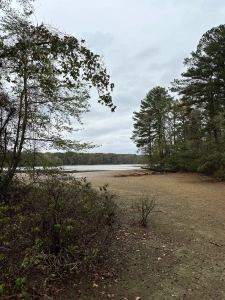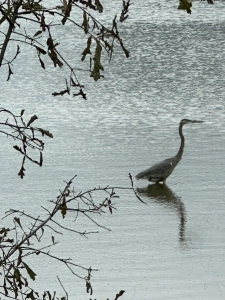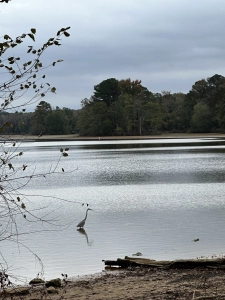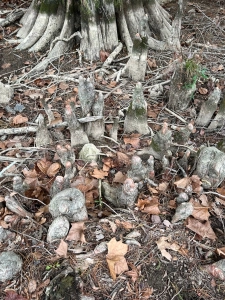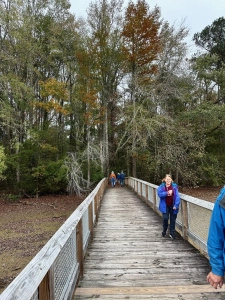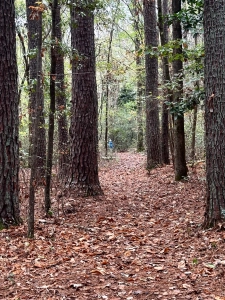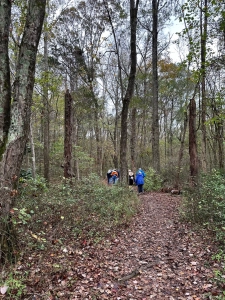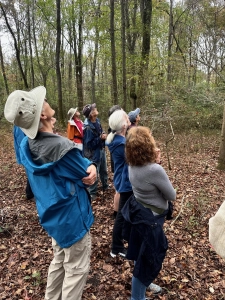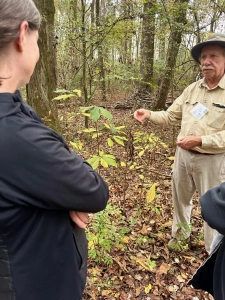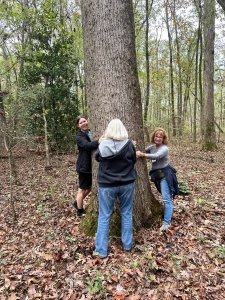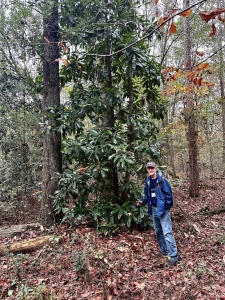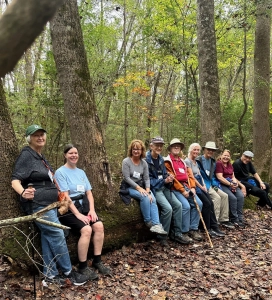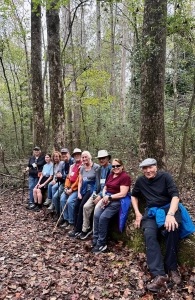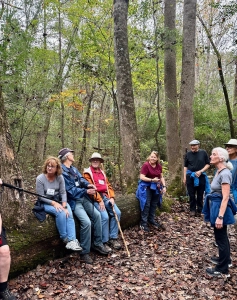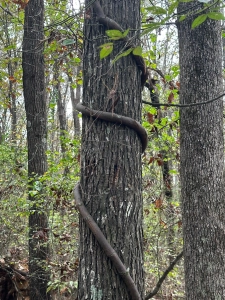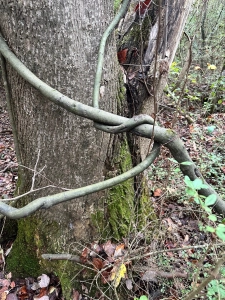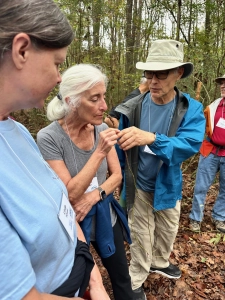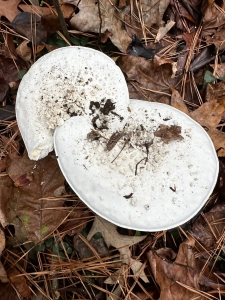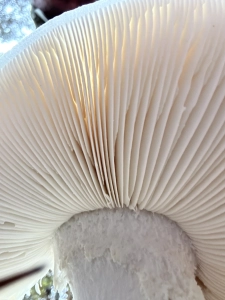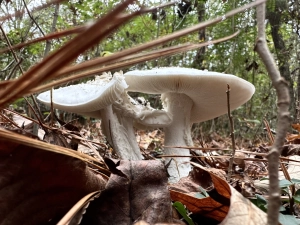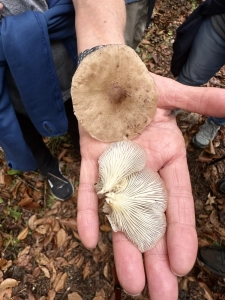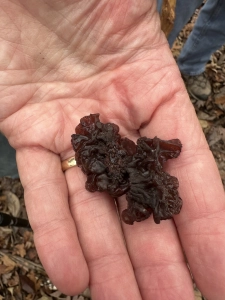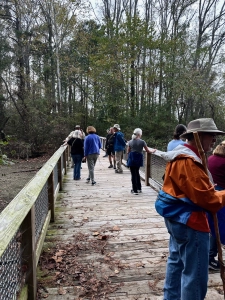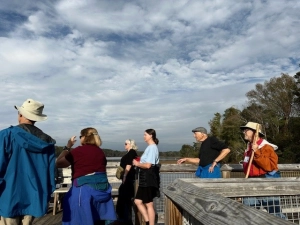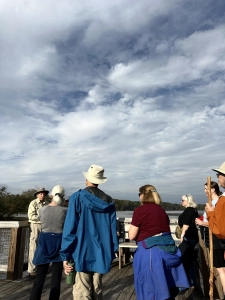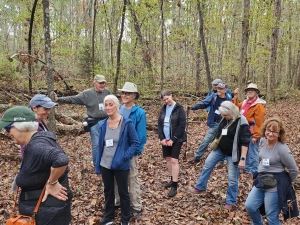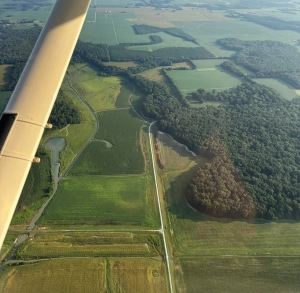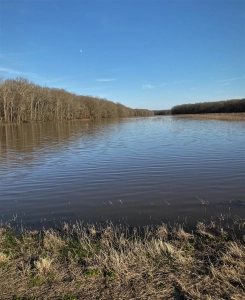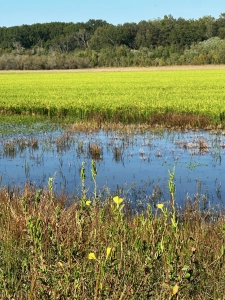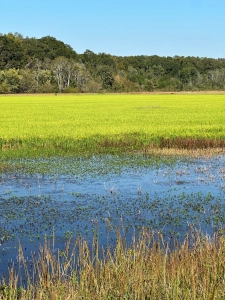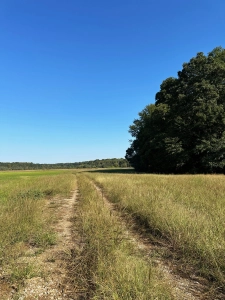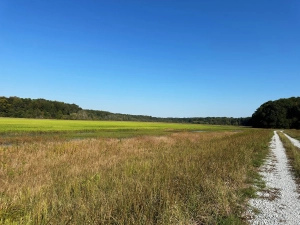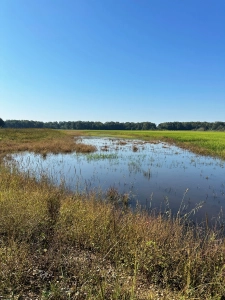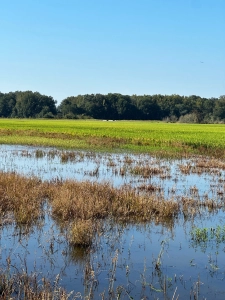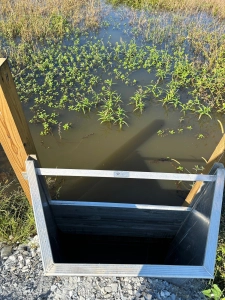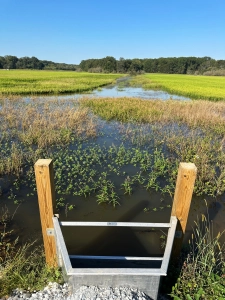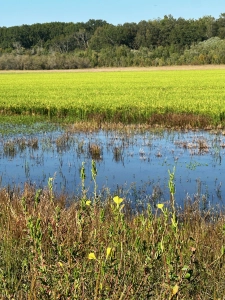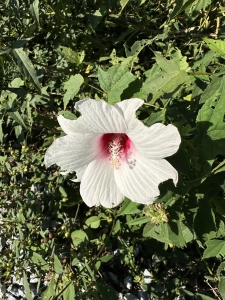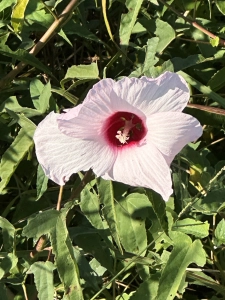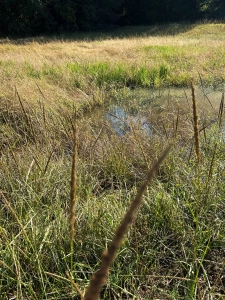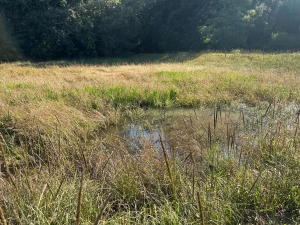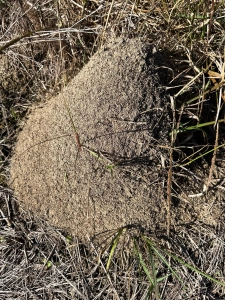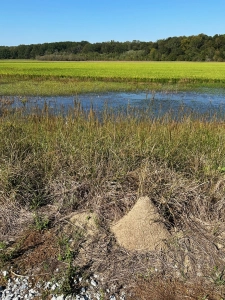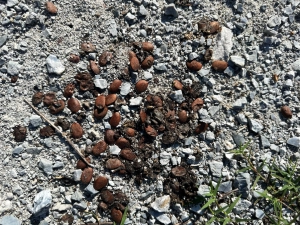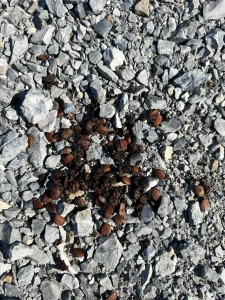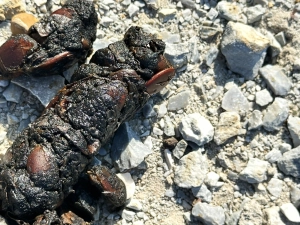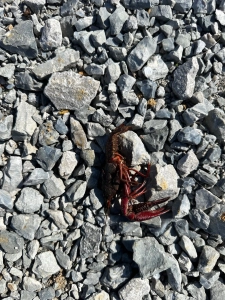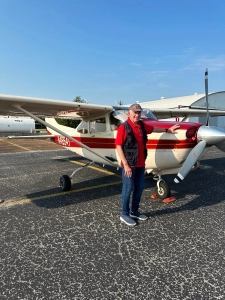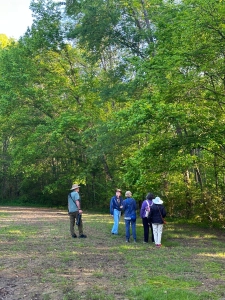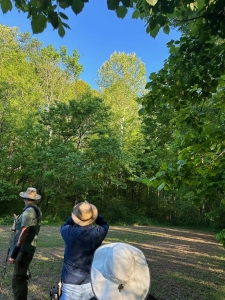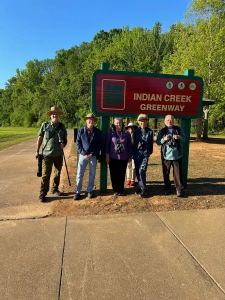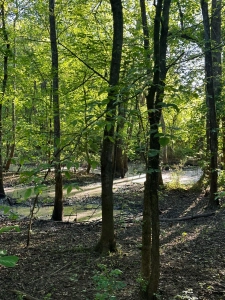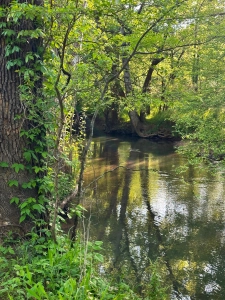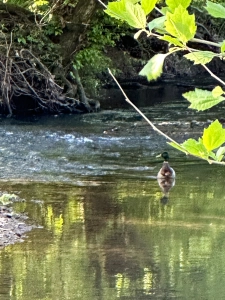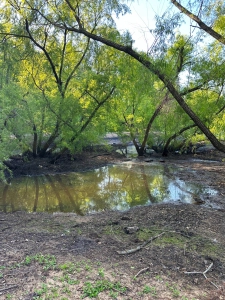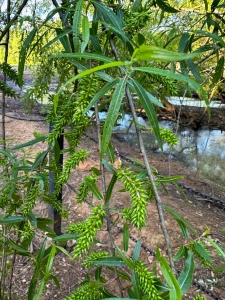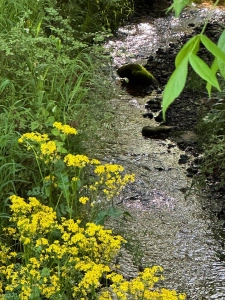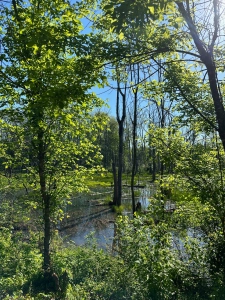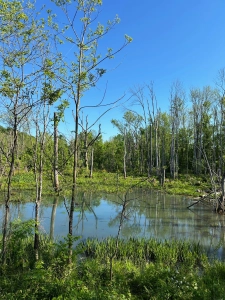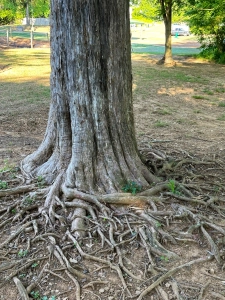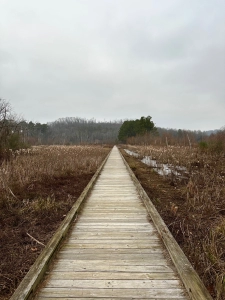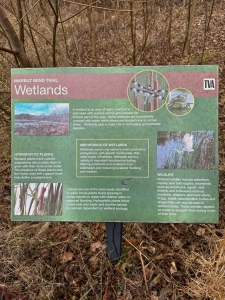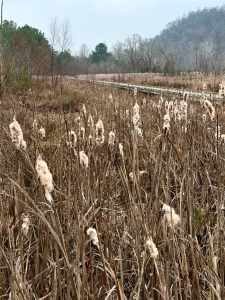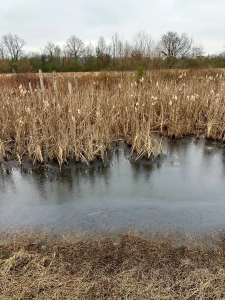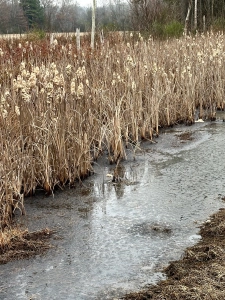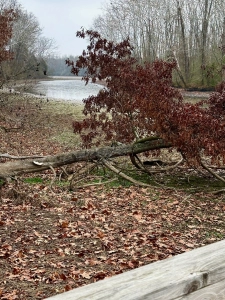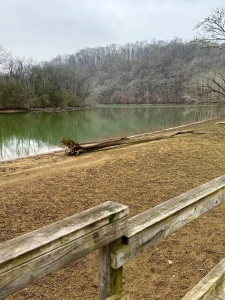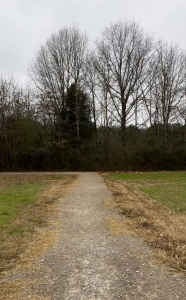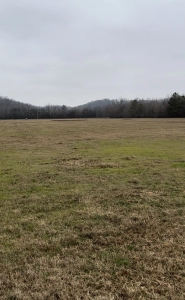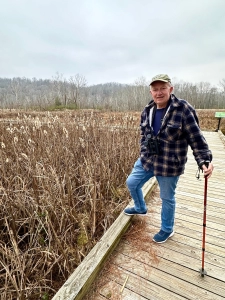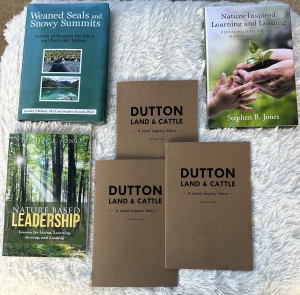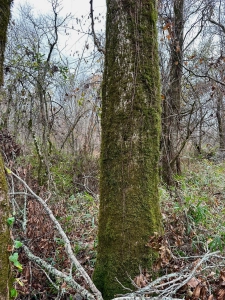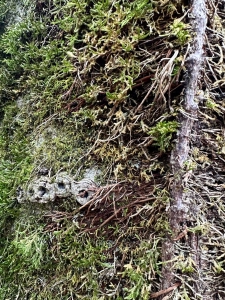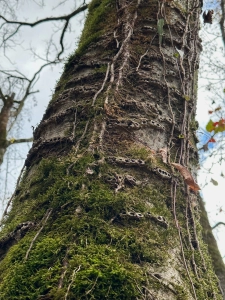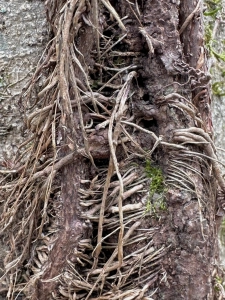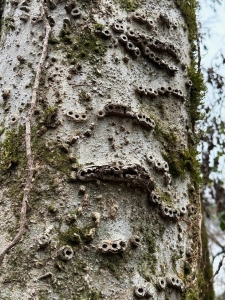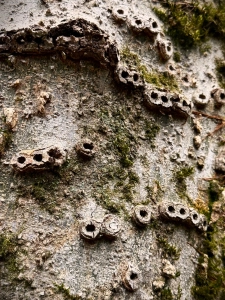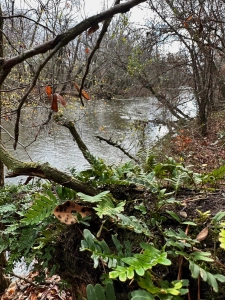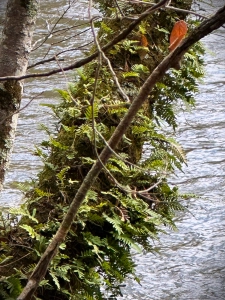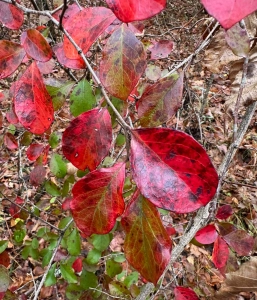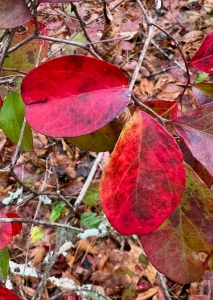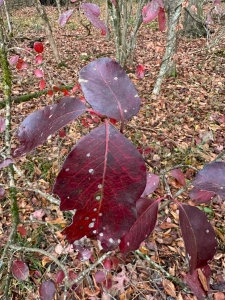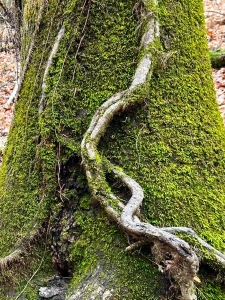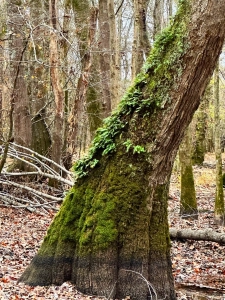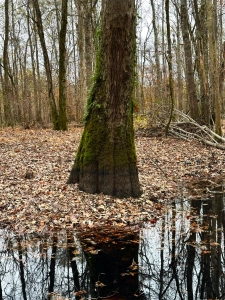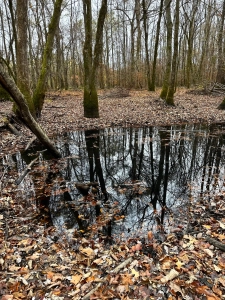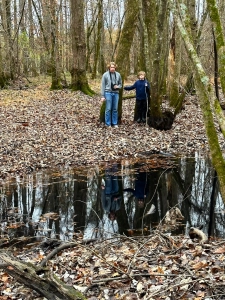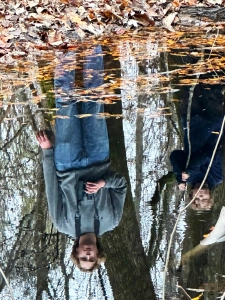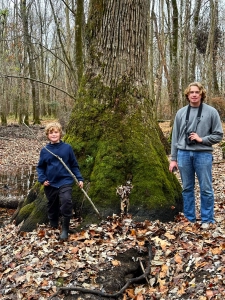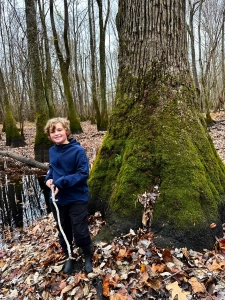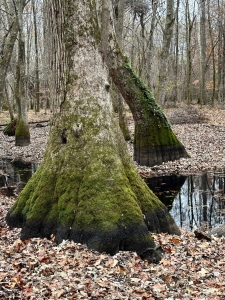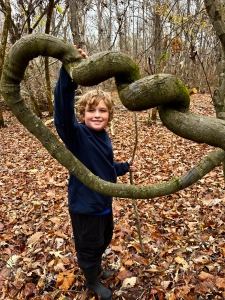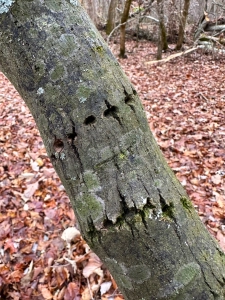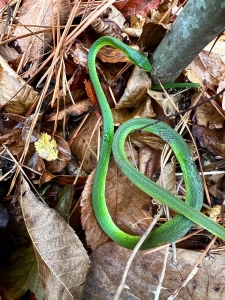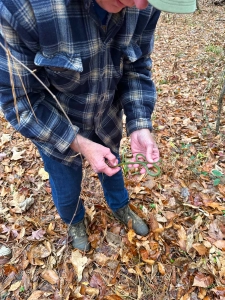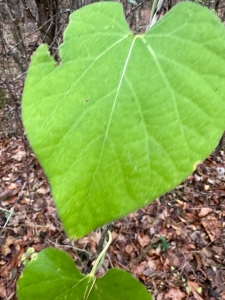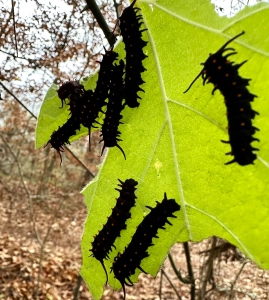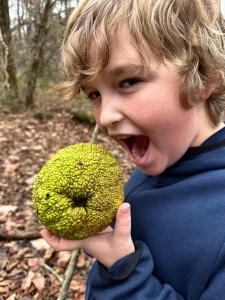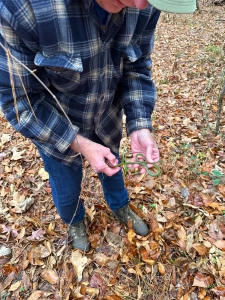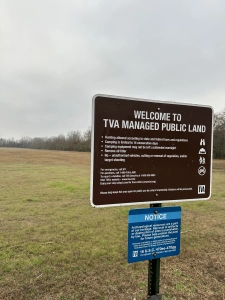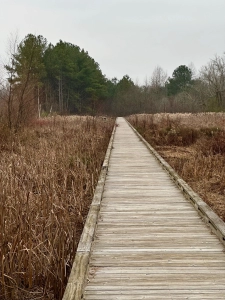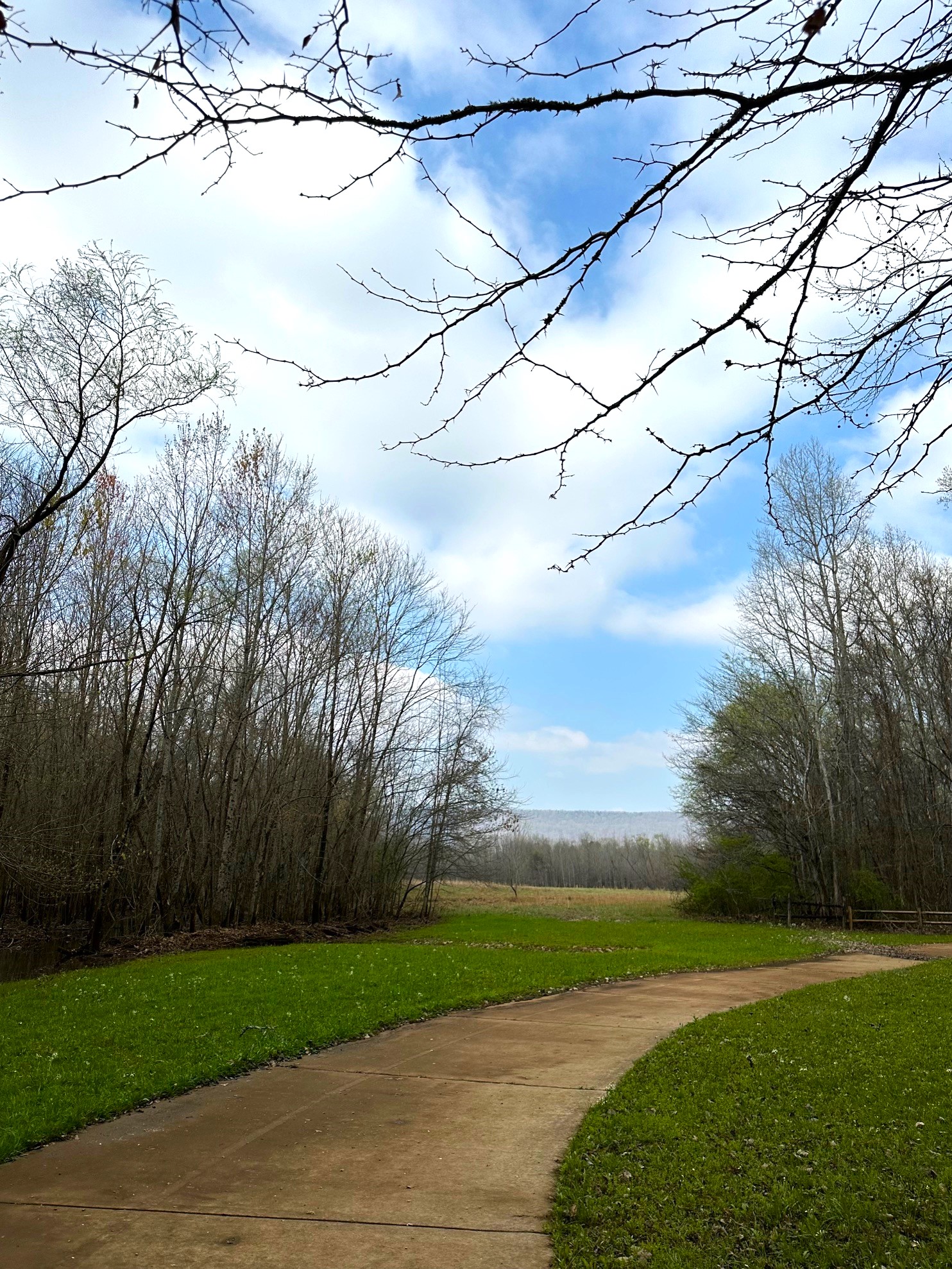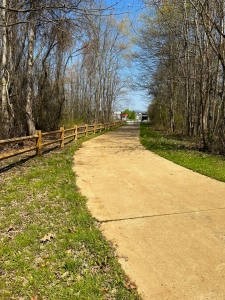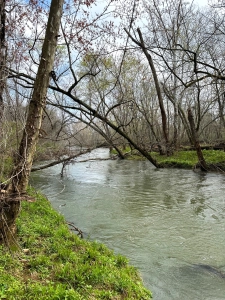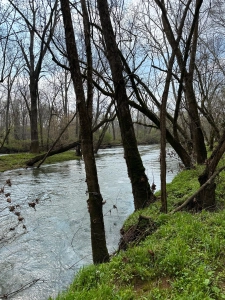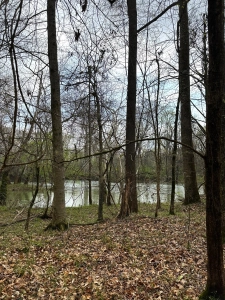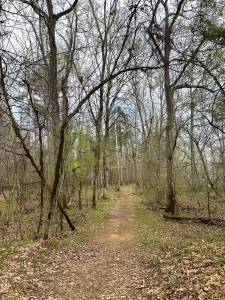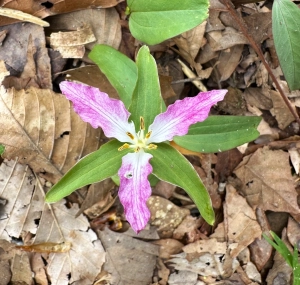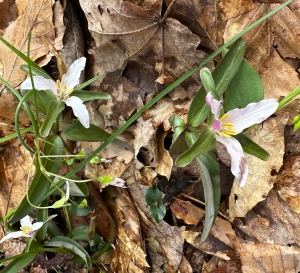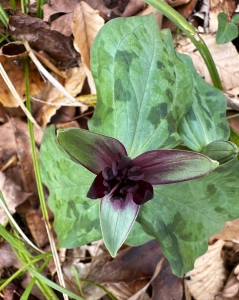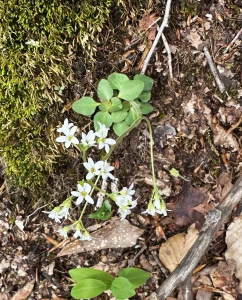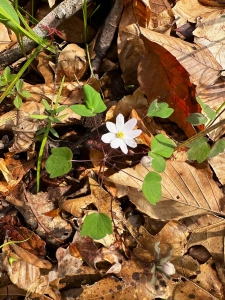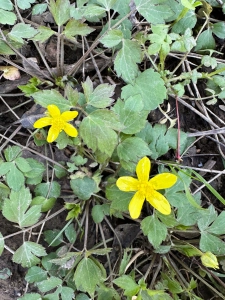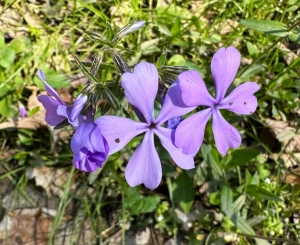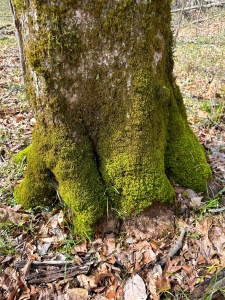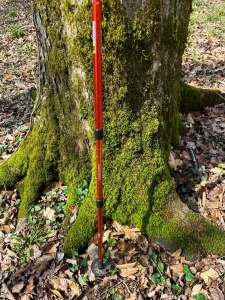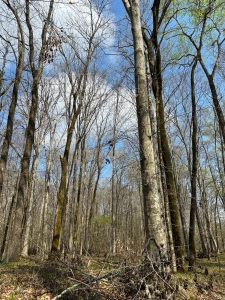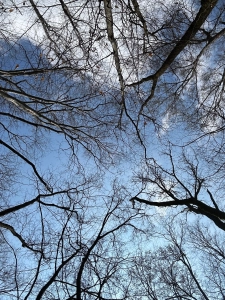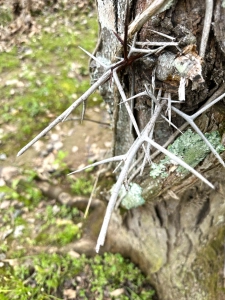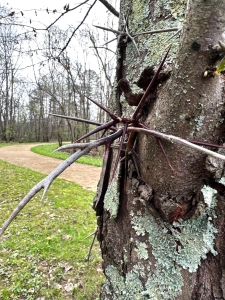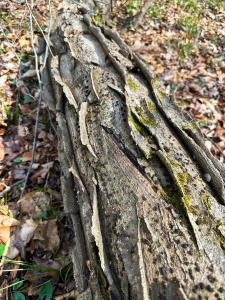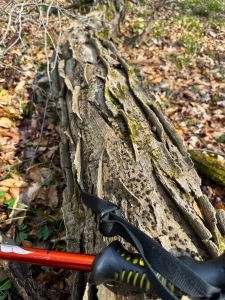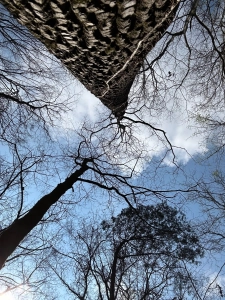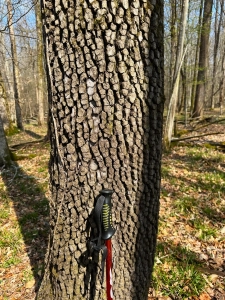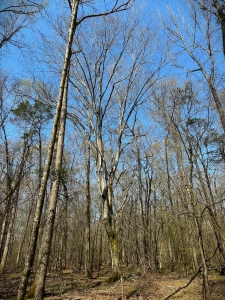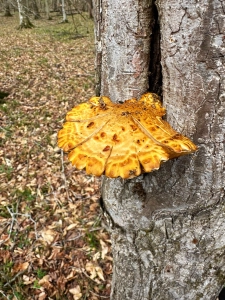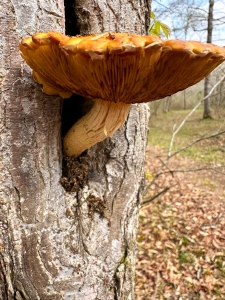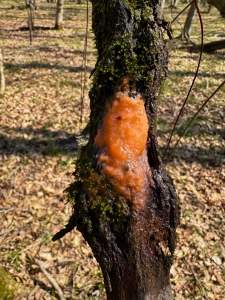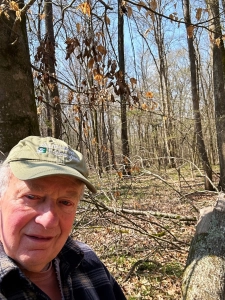Spring Morning Nature-Delights along Madison’s Bradford Creek Greenway!
I sauntered 2.5 miles with family on March 29, 2025, on an out and back from Heritage Elementary School along the Bradford Creek Greenway. I spent most of my time wandering hither and yon within the bottomland forest, exploring what might lie hidden in plain sight.
Bradford Creek carried a full flow, flush in response to the nearly 15 inches of rain I had measured since January 1. The creek is a great place to reflect…a mirror to the dormant forest and a soothing calmness to assist an old forester reflecting on the 73 vernal woodland seasons he has celebrated across many states and several nations.
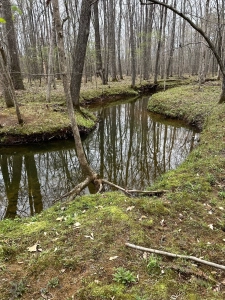
Life Can Be A Struggle
I cling to those memories, drawing strength and comfort from those experiences, while supplejack and grape vines twine and embrace in what for at leasst one will be a death spiral. Competition is part of an ecosystem-wide conflict among participants (plants, animals, fungi, invertebrates, and other life forms) for scarce resources, among the stakes are light, water, nutrition, and space. Life in the woods is not easy nor without strife.
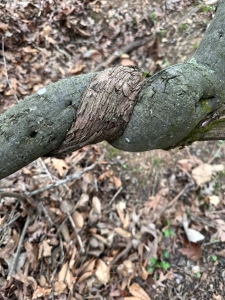
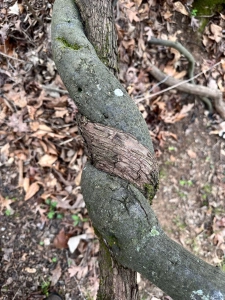
Decay and Decomposition
This tree, like all living organisms, yielded to superior forces (old age, disease, competition, etc.) and now stands as Nature’s life cycle artistry owing to decomposition, insects, bird scavaging, and untold other elements.
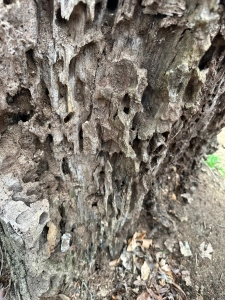
A decay-hollowed sweetgum, with an open portal from side-to-side, suggests a history of physical abuse allowing fungi to infect and decompose the wounded trunk across decades. Disease and decomposition do their work. Abuse in the forest is common…not of the deliberate malevant variety, but incidental to human interaction with tools, equipment, or vehicles. The Bradford Creek bottomland forest is not untouched wildland. It is a riparian zone preserved as a sewer line right-of-way and protected as a wetland, located in the heart of Alabama’s fastest growing urban population center, Madison, Alabama and Huntsville.
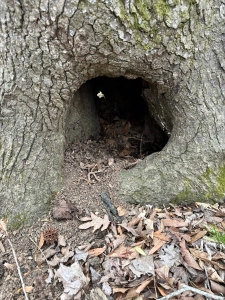
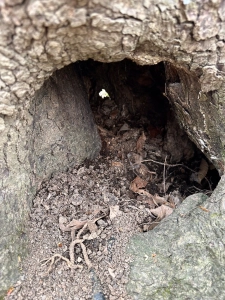
Most trees along the greenway forest evidence old injuries. A look inside reveals structural weakness that will yield to gravity’s persistent and undefeated power. Fallen trunks litter the forest. Nothing in Nature is static.
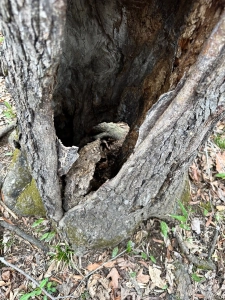
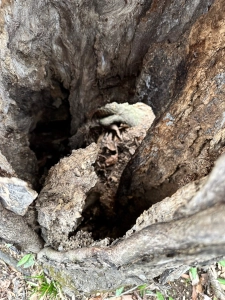
Grnadson Sam stands by a snag on its last legs. I give it less than a year.
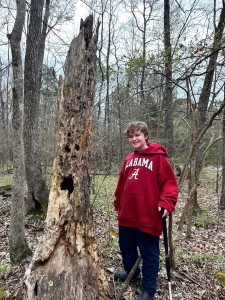
Life and Renewal
Even as death is a big part of life in the forest, it is all manner of life in these rich riparian forests that draws me back, again and again. I recorded this 57-second video of Sam, fawn lillies, and dwarf trillium in celebration of spring life returning.
Shagbark hickory is among the larger trees in the stand. This one appears healthy, its fruit (hickory nuts) a gift to the ubiquitous squirrels that scamper along the trail. I see no wound scars on this specimen.
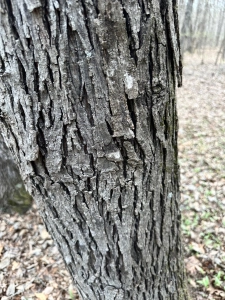
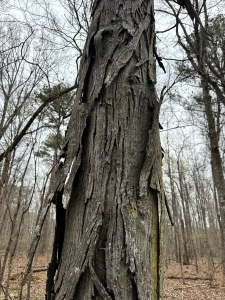
This box elder, common along the forest edge on both sides of the greenway, is in flower. Spring in the northland where we’ve resided from time to time (PA, NY, NH, OH, and western MD), arrives with a perceived sense of urgency, seeming eager to enter the much shorter growing season. Here in northern Alabama, autumn slowly evolves to spring with a few days of winter interrupting. This box elder is sporting new leaves and is in full flower.
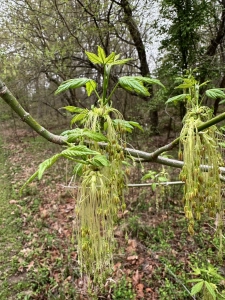
Butterweed is an early spring showoff at forest edge and in meadow habitats.
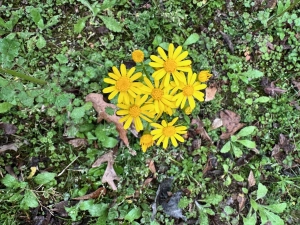
Canadian lousewort’s intricate leaves and lavendaer bloom merited a photograph.
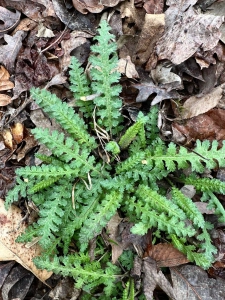
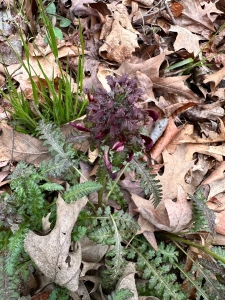
Sweet Betsy trillium was within a day or two of opening its display to proclaim the new season.
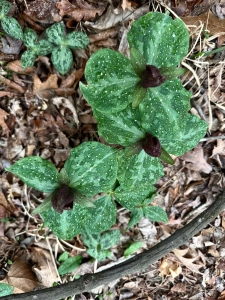
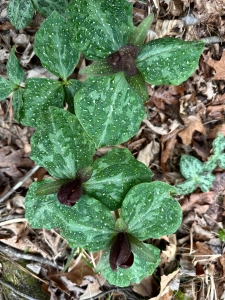
I recorded this 55-second video of the floral celebration underway.
Not to be outdone by sweet Betsy, the smaller, more delicate dwarf trillium claimed nearby forest floor.
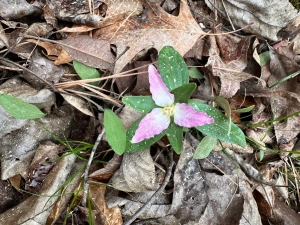
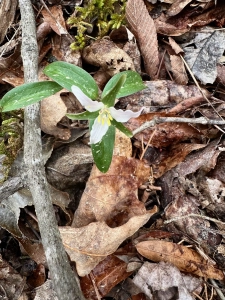
Yellow fawn lilly (trout lilly) has held a place in my heart since I took systematic botany (the study dealing with the classification and evolutionary relationships of plant species, integrating taxonomy and phylogenetics) in spring 1970. Weekly field trips focused on spring ephemeral wildflowers.
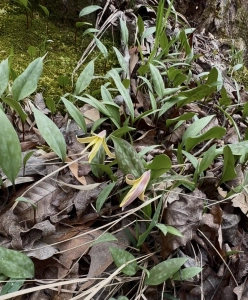
My 40-second video brings yellow fawn lillies to life.
Virginia spring beauty also resides with absolute clarity in that 55-year memory bank. I can still see us students racing through the central Appalachian hills to keep up (physically and intellectually) with Dr. Glenn O. Workman. He became a lifetime mentor and friend (https://stevejonesgbh.com/2017/11/28/sowing-seeds-tomorrow/) across my career.
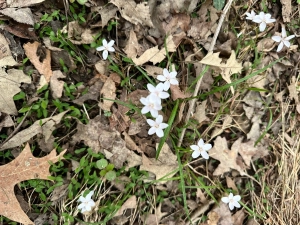
Mayapple is yet another ephemeral staple of my undergraduate education, professional pursuit, and retirement avocation and passion.
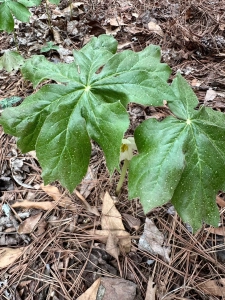
Woodland spider lilly foliage hints at the spectacular flowers that will blossom in June!
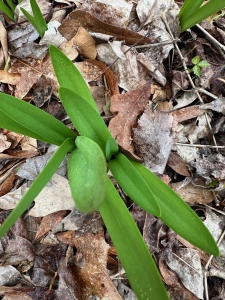
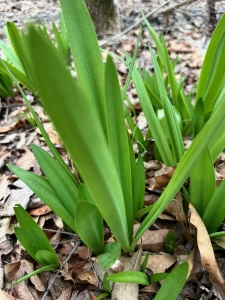
Each time I venture into wooland Nature, I encounter the incredible treasures that lie hidden in plain sight. Along with the revelations come vivid and cherished memories, all the sweeter because I can occasionally share all with young Sam, one of my two Alabama grandsons!
Albert Einstein knew the value in having Sam along to share these treasures:
Our death is not an end if we can live on in our children and the younger generation. For they are us; our bodies are only wilted leaves on the tree of life.
Thoughts and Reflections
I offer these observations:
- A drab spring day reveals the promise of the coming season to those who seek it. (Steve Jones)
- In retirement I am enriched by the freedom of time without pressures, restrictions, and deadlines. (Steve Jones)
- Our death is not an end if we can live on in our children and the younger generation. For they are us; our bodies are only wilted leaves on the tree of life. (Albert Einstein)
Inhale and absorb Nature’s elixir. May Nature Inspire, Inform, and Reward you!
Note: All blog post images created & photographed by Stephen B. Jones unless otherwise noted. Please circulate images with photo credit: “©2025 Steve Jones, Great Blue Heron LLC. All Rights Reserved.”
I am available for Nature-Inspired Speaking, Writing, and Consulting — contact me at steve.jones.0524@gmail.com
Reminder of my Personal and Professional Purpose, Passion, and Cause
If only more of us viewed our precious environment through the filters I employ. If only my mission and vision could be multiplied untold orders of magnitude:
Mission: Employ writing and speaking to educate, inspire, and enable readers and listeners to understand, appreciate, and enjoy Nature… and accept and practice Earth Stewardship.
Vision:
- People of all ages will pay greater attention to and engage more regularly with Nature… and will accept and practice informed and responsible Earth Stewardship.
- They will see their relationship to our natural world with new eyes… and will understand more clearly their Earth home.
Tagline/Motto: Steve (Great Blue Heron) encourages and seeks a better tomorrow through Nature-Inspired Living!
Steve’s Four Books
I wrote my books Nature Based Leadership (2016), Nature-Inspired Learning and Leading (2017), Weaned Seals and Snowy Summits: Stories of Passion for Place and Everyday Nature (2019; co-authored with Dr. Jennifer Wilhoit), and Dutton Land & Cattle: A Land Legacy Story (2023) to encourage all citizens to recognize and appreciate that every lesson for living, learning, serving, and leading is either written indelibly in or is powerfully inspired by Nature. All four of my books present compilations of personal experiences expressing my deep passion for Nature. All four books offer observations and reflections on my relationship with the natural world… and the broader implications for society. Order any from your local indie bookstore, or find them on IndieBound or other online sources such as Amazon and LifeRich.
I began writing books and Posts for several reasons:
- I love hiking and exploring Nature
- I see images I want to (and do) capture with my trusty iPhone camera
- I enjoy explaining those images — an educator at heart
- I don’t play golf!
- I do love writing — it’s the hobby I never needed when my career consumed me
- Judy suggested my writing is in large measure my legacy to our two kids, our five grandkids, and all the unborn generations beyond
- And finally, perhaps my books and Blogs could reach beyond family and touch a few other lives… sow some seeds for the future
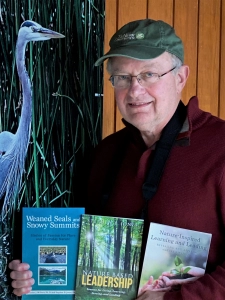
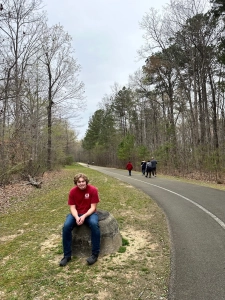
Sam’s older brother, Jack!

